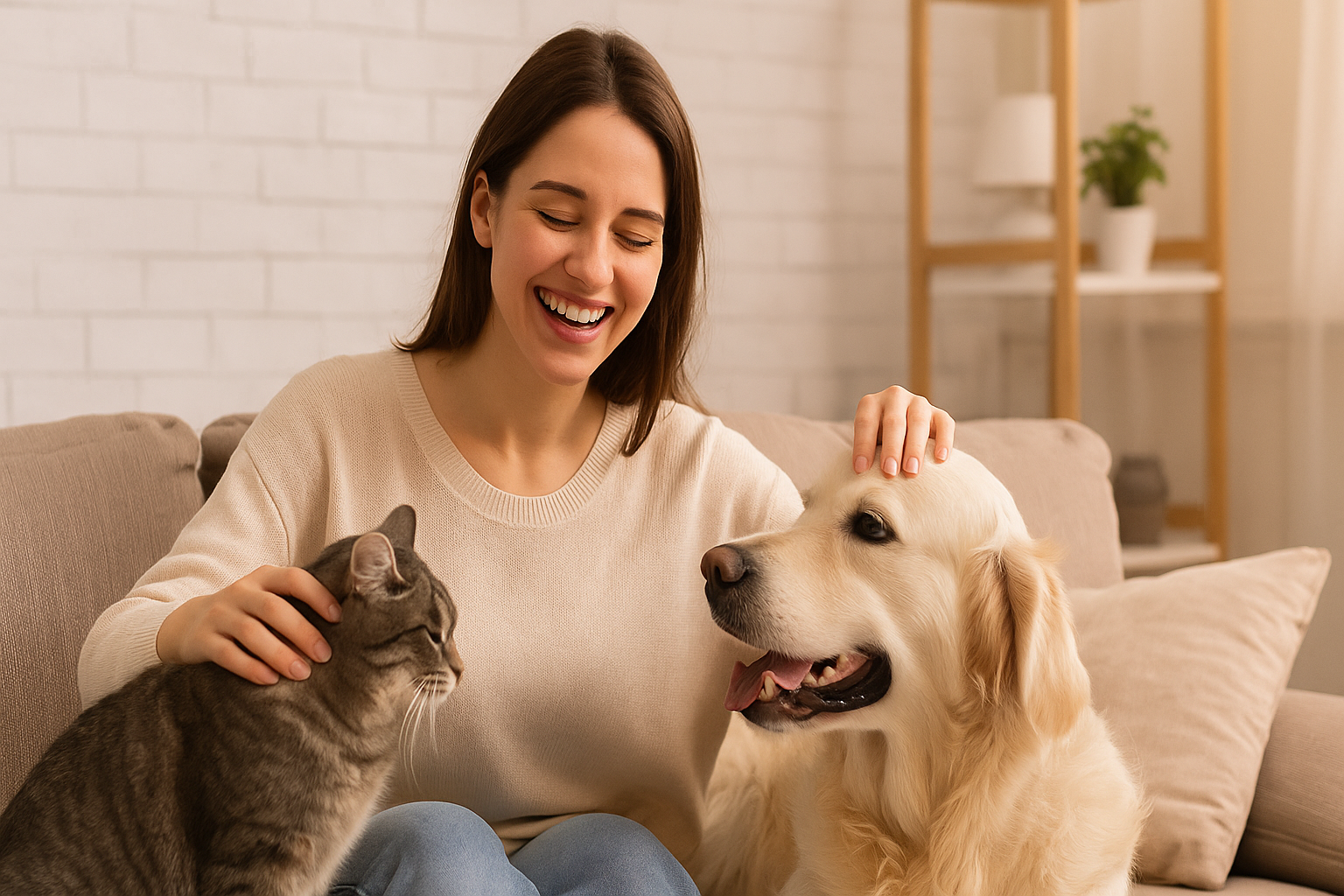Personal rituals. They don’t need words; their message is in every movement, sound, and look. But to care for them well, you need to pay close attention and listen carefully, ready to understand even the smallest signs.
- Everyday Messages Beyond Words
Dogs and cats start “talking” before you wake up. A wet nose nudges you, a gentle paw stirs your blanket, a wagging tail as they pass by—these small actions help create a bond. Noticing these gestures, whether expected or not, allows you to care for your pet according to how they feel and need, not just based on your plans for the day.
2. Capturing the Nuances: What Your Dog Really Says
Dogs don’t just bark and wag their tails; they show feelings with their entire bodies.
A tail wagging in large circles shows they are very happy, while a low, still tail may indicate insecurity. Raised fur can signal excitement, but it can also be a warning to be cautious. If their body becomes stiff, their posture tense, and their mouth tight, take a step back and remain calm; your friend may be feeling threatened or overwhelmed. Rapid panting, especially when things are calm, can indicate stress, not just heat.
Pay attention to everything around you, as one isolated gesture, like a wag, rarely tells the whole story.
3. Understanding Subtlety: The Art of Expression in Cats
Felines use small gestures to say a lot.
When your cat weaves between your legs with its tail held high, it is confident and seeking closeness. Quick, sharp flicks of the tail warn of rising irritation. Ears slowly tilting back? Likely frustration or fear.
Soft blinks toward you indicate contentment—this is an invitation to blink slowly back. Additionally, pay attention to body posture: a tense crouch indicates unease; a relaxed sprawl means they trust you.
- Touch: The Individual Blueprint
Every animal has unique preferences for physical affection.
Some dogs crave a full-body massage, while others shy away and just want gentle scratches under the chin. Few cats allow belly rubs, but many beg for soft strokes behind the ears.
Always approach slowly and pause to see how your pet reacts; a turned head, sidestep, or flattened ears mean “not now.”
Discover what makes your pet purr or wag their tail, and learn what makes them happy.
- Honoring Boundaries and Choices
True respect for pets shines through when you give space if they ask for it.
If a cat leaves the room or a dog turns away, don’t feel the need to insist. Over time, this respect will make you both feel more secure and strengthen the trust between you.
If you ignore signals—whether a tense stance or a deep sigh—your animal may become more withdrawn.
- Eye Contact: When Looking is Speaking
Gentle, relaxed eye contact is a silent hug for both species.
A friendly, soft gaze reassures most dogs; cats, on the other hand, “kiss” with slow blinks that you can return as a sign of trust and friendship.
However, avoid staring continuously—both cats and dogs often see this as a challenge.
- The Language of Sound
Pay attention to the music of your home:
Excited barks from a dog mean something very different from low growls or prolonged whining.
Short, high-pitched meows from a cat may greet you, while louder, persistent meows demand attention.
Note when purring is soft, signaling calm, versus tense or rapid—during those moments, a cat might be trying to soothe itself due to stress.
- Play and Emotional Exchange
Playing builds bonds and helps relax both pets and people.
For dogs, use playful games, positive reinforcement training, or exploratory walks.
For cats, rotate toys, provide boxes or paper bags, and try out string or feather teasers.
Be present in these interactions—your attention matters just as much as the toy.
- Mood Changes, Adapt Your Care
Animals have their own good and bad days. Sometimes an energetic dog will want long walks; other times, a sleepy cat simply wants to sprawl in the sun. When your pet loses interest in play, avoids touch, or hides, let them rest. Seek out small, positive moments that fit their mood rather than pushing unwanted affection.
- Building Connection: The Practice of Attention
Connecting with pets isn’t about grand gestures, but rather small daily acts—respecting their sleep, making eye contact when saying “hi,” giving head rubs, or just sitting together in silence.
Consistency, patience, and kindness make the difference between a functional home and a truly loving one.
Think About It:
Pets have their own way of communicating through gestures, blinks, meows, or barks. When you learn to understand these signs, you not only care for them better but also become a special and safe friend for them. What new thing will you notice about your pet after today?
